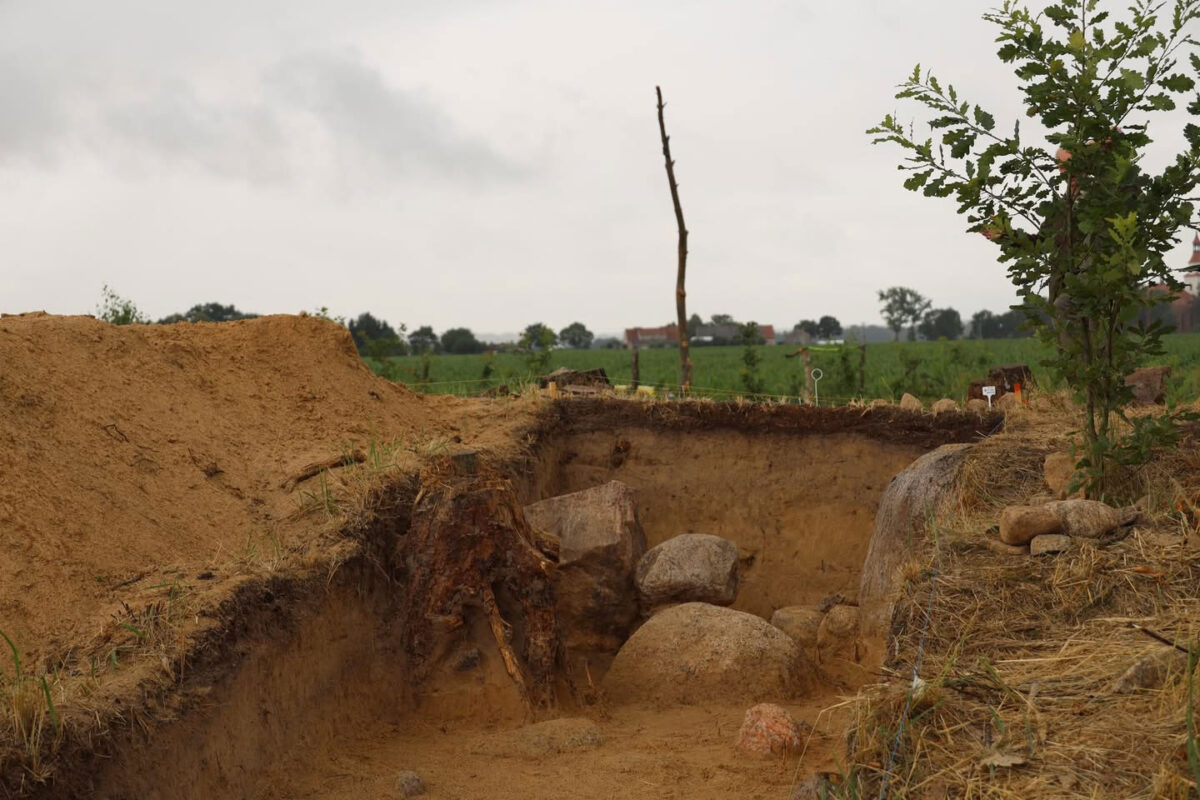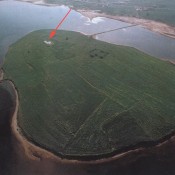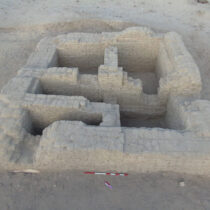Archaeologists in Poland have uncovered a remarkable set of 5,500-year-old triangular burial mounds, nicknamed the “Polish pyramids,” containing megalithic tombs built by one of the earliest farming societies in the region.
These ancient structures were discovered in the village of Wyskoć, located in the Chłapowski Landscape Park in Wielkopolska province, during a routine field survey by researchers from Adam Mickiewicz University in Poznań. The mounds are long, triangular earthen structures stretching up to 200 meters, several meters high at the front, and tapering off into a narrow “tail” at the back.
Initial excavations at two of the five newly discovered sites confirmed that they date back 5,500 years, built by the Funnelbeaker culture at the end of the Stone Age. Despite being a largely egalitarian society, the Funnelbeaker people constructed monumental tombs for important individuals—such as leaders, priests, or shamans.
These tombs typically held a single skeleton laid flat on its back with legs pointing eastward, toward the front of the mound, as explained Artur Golis, an expert in landscape and nature conservation from the Wielkopolska Landscape Parks authority. The burials were often accompanied by grave goods, like stone tools, pottery, and copper ornaments. Although the skeleton in one of the newly found tombs may not have survived, researchers are hopeful that some burial offerings remain intact.
Due to their size and distinctive triangular shape, these structures are commonly referred to as “Polish pyramids” or “giants’ beds.” Professionally, however, they are classified as Kuyavian-type megalithic tombs, named after the Kuyavia-Pomerania region, where most such monuments have been found. Prior to this discovery, only one other site of this type had been uncovered in Wielkopolska, back in 2019.
Large boulders, some weighing several tonnes, were originally placed upright at the eastern head of each mound, though many have since been removed or displaced over the centuries. “People have used these stones for their own needs for thousands of years, which has led to significant degradation of the structures,” Golis noted.
Currently, the site remains closed to the public. Authorities will decide whether to open it for visitors after excavation and research efforts are complete.





